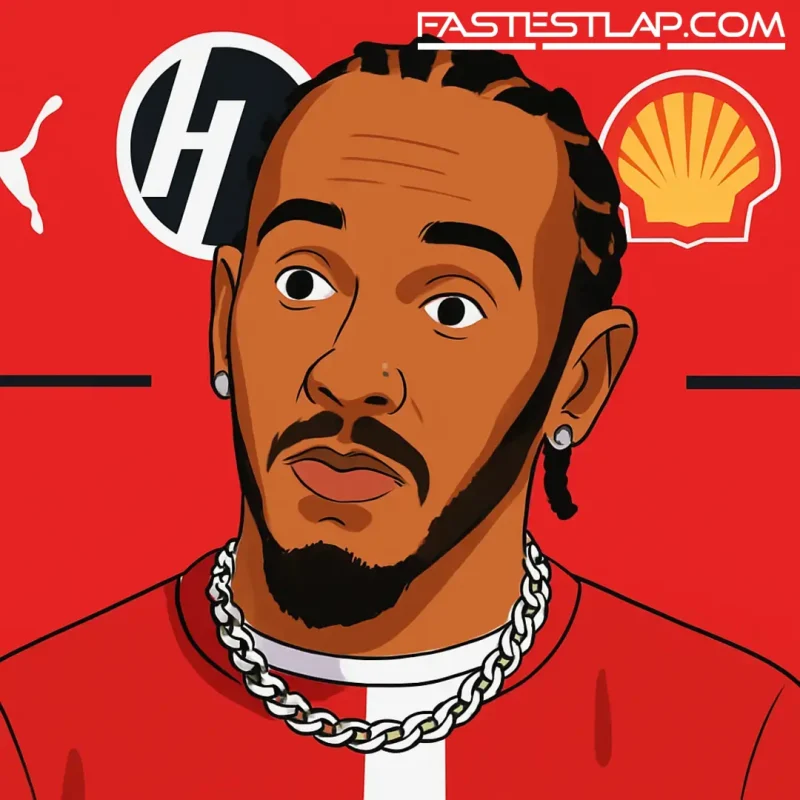Lewis Hamilton came to Ferrari with a noise you could feel in your chest. The tifosi bought the shirts, the paddock braced, and F1’s most decorated driver walked into the red garage looking like a man about to write a fresh chapter. Nine months on, the story’s far more workmanlike: one sprint win in China, a handful of fourth places on Sundays, and a podium column that still reads zero.
That’s the uncomfortable headline. Hamilton has adapted to many cars over his career, but this one’s been stubborn. The Ferrari’s traits — power delivery, balance windows, tyre preparation — haven’t met him halfway, and Charles Leclerc has found the groove quicker. Leclerc’s been on the rostrum five times and holds a 44-point cushion over his new teammate, the pair running fifth and sixth in the Drivers’ standings. It’s not catastrophic, but it’s not what anyone thought “Hamilton at Ferrari” would look like either.
The lull before the summer break was especially rough. Three straight Q2 exits bruised Hamilton’s mood and his honesty. He called himself “useless” and threw a grenade at his own seat, quipping Ferrari “probably need to change driver.” No one in Maranello took that literally, but it told you everything about where his head was.
Post-holiday, the climb back began. The speed’s flickered into view — a tight fight with George Russell at Zandvoort, then a clean, angry run from P10 to Russell’s gearbox at Monza. Those weekends informed team principal Fred Vasseur’s view that the podium drought won’t last. He’s seen enough evidence in race trim to believe one good Saturday unlocks a very different Sunday.
“Yes,” is Vasseur’s line on whether Hamilton will make the box before the season’s out, pointing to those Russell fights as case exhibits. It’s the right note from a boss who’s tried to keep the floor steady all year, resisting any temptation to turn shortfalls into theatrics.
Hamilton’s response is colder. A podium would be nice, he admitted, but it wouldn’t change his season. Strip away the emotion and he’s right. One shiny result doesn’t rewrite a campaign defined by too many compromised Saturdays — he’s only started inside the top 10 twice in the last five Grands Prix — and a car that needs too much coaxing to hit its peak.
“If we qualify better, we’re going be in a much better position,” he said. It’s a simple sentence that contains Ferrari’s whole homework list. The high-fuel picture is serviceable; the low-fuel execution is where the points bleed. Hamilton also made the unsubtle plea all drivers make when the stopwatch won’t move: upgrades, please. But with the factory already staring at next year’s car, that wish sits in the wrong calendar box.
This is where the Hamilton-Ferrari project is a fascinating case study. He’s still the same operator who reads a race like a chessboard and finds pace when conditions flip. The sprint in Shanghai, taken from pole to flag, reminded everyone of the muscle memory. But the spotlight on Saturdays exposes the other side of the alliance: how different driving languages can be, and how long it takes to translate them under pressure.
What happens next matters for more than optics. There are seven Grands Prix left, and if Hamilton doesn’t crack the top three at any of them, it’ll be his first full F1 season — in 19 — without a grand prix podium. That’s an extraordinary statistic for a driver who’s built a career out of making the improbable feel routine. It would sting.
The schedule offers windows. Tracks that reward rhythm and tyre empathy; weekends where variance throws a bone. And Ferrari’s race pace has been close enough to the podium fight that a clean Saturday — or a strategic roll of the dice — can change the tone quickly. The internal benchmark is clear: Leclerc’s getting there, so the car can. Hamilton needs the front half of the grid and a first stint that holds together. Then the race craft does the rest.
The broader picture at Ferrari is brutally simple: Vasseur’s project has made the team tidier and quicker, but the final bit — the repeatable, Saturday-morning, switch-it-on bit — still goes missing too often. Hamilton joined to help fix that. He’s been part of this story before, and he knows the cure is rarely romantic. It’s set-up discipline, tyre prep, out-lap accuracy, and drivers trusting what they’ve got beneath them.
“Optimising and execution,” he called it. Not a slogan, just the job.
The hype machine has cooled and the reality is in. This is a slow burn, not a firework. Still, there are few things as dangerous in this sport as a driver of Hamilton’s calibre with something to prove and a car hovering within striking distance. A podium wouldn’t rewrite 2025, but it would mark the first truly shared moment between the driver and the badge he chose. And if it arrives, don’t be surprised if it opens the door to a few more. That’s how these things tend to go when the pieces finally click.




